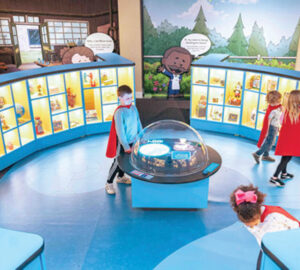maryland heights
In the 1970s, Asian carp were brought to the United States to clean algae from tanks in commercial fish farms and sewage treatment plants. What could possibly go wrong? Carp are akin to kudzu—imported from Asia as cattle feed, kudzu is now considered a noxious weed. Although cattle will eat kudzu, it grows about 1 foot per day, rapidly snaking over shrubs and trees and smothering most plants it touches. What the carp invasion may one day accomplish is pretty ugly, too: Last summer, one was found only 9 miles from Lake Michigan. Could they eventually spread throughout the Great Lakes, threatening commercially harvested species like whitefish? These dimwitted 35-pounders already invaded the Missouri- Mississippi watershed. Whenever the rivers flood, they spill into lakes, streams and standing water everywhere. (Ever hear the insult, ‘Dumber than ditch carp?’) Long story short, Creve Coeur Lake is infested, crowding out species fishermen like to catch and eat, like crappie. A couple of weeks ago, Missouri Department of Conservation workers removed hundreds of pounds of Asian carp from the Maryland Heights recreational area. The big fish are obnoxious for another reason: They get jumpy when startled, occasionally whapping into unsuspecting boaters and water skiers. (And, according to a kayaking friend, that hurts!) Well, why not just catch and eat ’em? For an idea of how many imagine carp tastes, just intersperse the middle two letters. But is it really inedible? Maybe not. The Patagonian toothfish and slimehead also sounded too ugly for the table—until marketers rebranded them, respectively, ‘Chilean seabass’ and ‘orange roughy.’ Both are now severely overfished. Who knows—instead of using bulldozers to dispose of them en masse, maybe we could invent a charming new name to create the illusion that carp are a delicacy worthy of the finest restaurants. How about ‘succulent silverfin?’ My father remains unconvinced. Here’s his secret carp recipe: Preheat oven to 375. Clean carp, place on 1-inch-thick cedar plank. Bake for 45 minutes. Remove plank from oven, allow to cool 15 minutes. Discard carp. Eat plank.
richmond heights
A preemie paradise? When the new Neonatal Intensive Care Unit (NICU) at SSM Health St. Mary’s Hospital in Richmond Heights opened last month, more than 30 babies—including a set of triplets—were moved into their new ‘starter home’ on the sixth floor. The $15 million renovation has 36 large, private rooms, an education space, a family lounge, laundry and showers—and a patio. Nurses and neonatologists were involved in each step of the NICU’s design and planning. Rooms have recliners for comfortable feeding and skin-to-skin bonding, as well as convertible couches for parents who wish to sleep next to their baby’s incubator. Other amenities for feeding and lactation support include a hospital-grade breast pump, milk refrigerator and bottle warmer. Each room has a camera system equipped with a secure online portal that allows parents, family and friends to view infants in real time, 24/7. Most rooms have windows or access to natural light from large hallway skylights. Where windows weren’t an option, overhead lights were installed to mimic natural light. More than 3,000 babies per year meet the world at St. Mary’s. Supported by Cardinal Glennon Children’s Hospital neonatologists, the Level III NICU treats more than 800 newborns each year.
kirkwood
Think teens in the metro have talent? If not, read no further. (Still here? Good.) We think any teen who musters the guts to perform is gifted. Most high school plays are proof positive of this. You can see for yourself the talent our area is blessed with when 46 high school acts take the stage March 25 at Kirkwood High’s Keating Center to compete for the opportunity to perform at The Fabulous Fox Theatre for the St. Louis Teen Talent Competition. Semifinalists, winnowed down from 100 acts in the preliminary round, include 67 students representing 37 bi-state high schools and performing arts organizations (within a 50-mile radius of the Arch), plus homeschoolers. The professional judges represent a cross-section of the metro performing arts community and entertainment industry. Acts include singers, musicians, dancers, twirlers, aerialists, jugglers and musical theater performers. The finals—Saturday, April 28, at The Fox—are free. General admission tickets will be available beginning March 26 through Metrotix and at The Fox box office. Judges, who are metro and national performing arts professionals, evaluate acts on technical ability, interpretation, stage presence and originality—plus, they’ll offer pointers to contestants looking to hone their skills. Competitors are vying for more than $40,000 in prizes, cash awards, college scholarships and performance opportunities. In addition to scholarships awarded at the finals—1st place, $8,000; 2nd place, $6,000; and 3rd place, $4,000—scholarship opportunities for Southeast Missouri State University and Webster University also will be available to competitors. Each finalist also will be eligible for unique public performance opportunities in the metro. This will mark the eighth annual competition produced by the Fox Performing Arts Charitable Foundation (FoxPACF). Previous finalists have performed at The Muny, Shakespeare Festival St. Louis, and in many other local and metrowide productions. FoxPACF produces a variety of other performing arts programs for youth, including Kids’ Night at The Fabulous Fox, Broadway Master Classes and Educational Encores. FoxPACF is a producing partner of the second annual St. Louis High School Musical Theatre Awards, slated for June 10.

olivette
I used to work at an ad agency for a clever fellow who’d jokingly start off inane conversations like so: “Some stretch of weather we’re having, eh?” It applied to any conditions … icy, hot and humid, mild, tornado warnings. Weather in the StL is like this—sometimes all within 24 hours or less—and although I’ve been here since 1982, I’ll never get used to it. (I moved from Atlanta after the crippling February blizzard but before the world-champion Redbirds of Whitey Herzog, Darrell Porter and Bruce Sutter.) Well, many lifers in the Lou can’t stomach our weather, either, which explains evacuation plans that may include, but are not limited to, Door County in the summer and Naples in the winter. A perfect example of our weird weather was the week of Valentine’s Day, when it got to nearly 80 degrees on Friday and then snowed Saturday morning. Wet snowflakes stuck to every twig and branch but soon melted on most pavement … except for bridges, just like the signs warn (which confuses clueless drivers in the summertime. OK, maybe just me). Anyhow, for a few short hours, everywhere was a winter wonderland. Glad my wife was feeling ‘pancakey’ so we could venture out early for a greasy breakfast via the Olivette McDonald’s drive-thru, because the view from the bridge on Dielman Road over a creek was absolutely breathtaking, but just for a little while. Every surface, coated as though with powdered sugar, was fairy-tale magic. But if you blinked, you missed it. Today the sight is mostly a dull brown—stagnant, standing water and dormant vines tangled in leafless branches.

st. louis
A colorful mural featuring a huge moth—an amateur entomologist tells us it’s not a butterfly—has been restored to its former glory on the east wall of a Willert Home Products building at 39th and Park in the Tiffany neighborhood of St. Louis. The lush, vibrant, spring-like scene includes flower blooms and greenery … never mind the stark, leafless, actual tree on the edge of the sidewalk emphasizing how cold and bleak it was on the day we passed by. The mural, by Robert Fishbone’s On The Wall Productions, was first created in 1996 and restored last year by Fishbone and his daughter, Liza. The moth’s enormous body even incorporates an electrical equipment box, conduits and … well, it’s painted around … an electric meter. Across the street is a retaining wall also painted about 20 years ago, featuring bunnies, ladybugs and more lush greenery. This mural has faded, and pressure from the earth is forcing the wall to lean toward the sidewalk. It’s on the southwest corner of the new SSMSLU Hospital construction site, where two vintage stone and brick door archways remain from a building demolished to make way for the new, $550 million SLU Hospital. (The hospital is set to open in 2020. We’ve reached out to the hospital communications team but have yet to hear whether the archways, wall and mural will remain. We’ll keep you posted.) In any event, Fishbone et al. are restoring artwork elsewhere on the Willert campus. One could call it ‘Operation Bright Sides;’ murals lend unexpected whimsy to the banal form-follows-function architecture of a commercial district.








